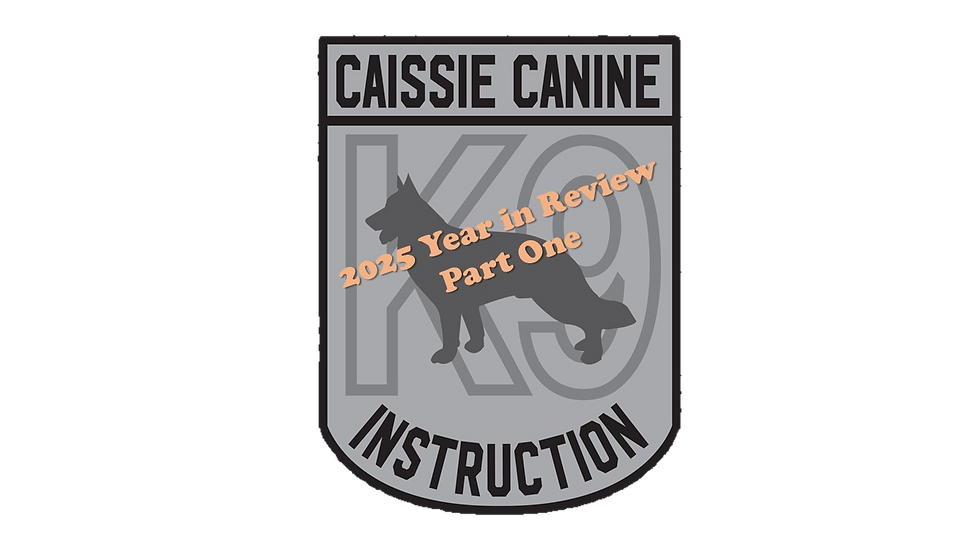Caissie Canine Instruction: Help, my dog has brittle toenails!!!
- caissiecanineinstr

- Mar 6, 2023
- 3 min read

We begin this week’s “RUFF TAILS” featuring a beautiful Labradoodle named Milo.

I was born Christmas Eve 2020 and have been part of the family for 2 years now. My mom and dad say I have the sweetest heart and am very loving. I love guessing which one of mom’s hands my treats are in, I also love my stuffed pig, but my favourite thing to do is holding my paw in your hand.

I am doing much better on my walks, still with my e-collar, as sometimes the excitement of other dogs and people take over. LOL. I am working on it. In the Spring my mom and dad are going to be working on my recall, therefore giving me a little more freedom to run and play.
****************************BONUS FEATURE*********************************
K9 CORNER WITH THE CHIEF
When adding a new pet or canine to your existing household pack, there are a few things to consider. Families must always consider the financial cost involved when adding a new pet.

Secondly, do you or your significant other have the time to spend training and exercising your new addition, especially if you invested in a new canine. Lastly, will the new pet deprive quality time with your existing pack?
Families with animals in place, whether it be cats, birds, or other animals, should consider the temperament and personalities of these animals. Will they be welcoming of the new addition? If any of these animals have anxiety or a high level of fear, this may not play out well.

Another consideration are the ages of your current household animal pack. If you have senior animals, bringing a young cat or pup into your family pack, may disrupt the pack harmony. The extremely high energy of a young kitten or puppy maybe stressful to the mature household pack.

I would consider having a trial period which allows you to assess and ensure all will be good with the pack harmony in the household. The time period I would recommend is 3 days for your new addition to climatize to their new surroundings, 3 weeks to settle into the pack, and household routines, and 3 months to lay down the foundation of trust, good behaviour modification and a strong pack bond.
Welcome to Doggie Dialogue
Over the years, we have had clients discuss with us their concern over their K9’s brittle toenails. What happens is their dog/dogs constantly chip or break their toenails on a regular basis. I know all our clients, with this particular concern, have seen their vets. Many tests are involved and can be costly. Sometimes the answer to this concern is a nutritional deficiency, but not always.
The K9 toenails are made of keratin, which is about 90% protein. This protein is acquired through the food your dog eats. Even feeding your dog the best food on the market, the question now becomes, is your dog absorbing these nutrients? We recommend talking to your vet about a protein supplement or vitamin to help with the absorption of these nutrients.

With the toenails being fragile, this can affect the nailbed causing more injury, excessive bleeding and secondary infections. It may take 3-6 months for the nail to grow back.
There are breeds that are predisposition for the autoimmune cases of nail breaking, which include Labrador Retrievers, Rottweilers, Siberian Huskies, Greyhounds and Miniature Schnauzers.

It is hard to get to the root of what causes the breakage. There can be many nail disorders, such as excessive levels of growth hormone, congenital (at birth), tumor, trauma, or immune disease.
Most vets will start your K9 on a high-quality dog food, with an essential fatty acid supplement to start, however if the breakage continues blood tests and a biopsy may be needed.

Through a biopsy the vet may discover your K9 has lupoid onychodystrophy, the cause is unknown, however hereditary and immune-mediated processes are suspected. This immune disease ONLY affects the toenails.
If this is the case the vet treatment will be a combination of medications design to suppress your dog’s immune system. Speak to your vet about vet-approved fish oils or omega 3, magnesium and zinc.

This can be an on-going battle, but with the right diagnoses and treatment plan this will assist your K9 with some needed comfort.




Comments